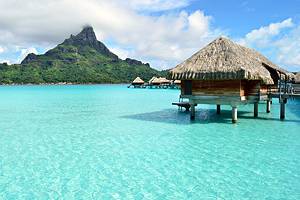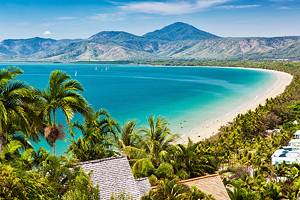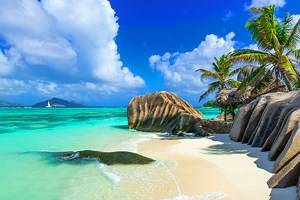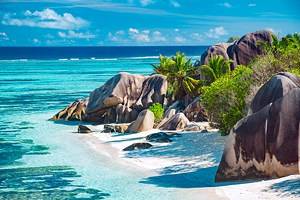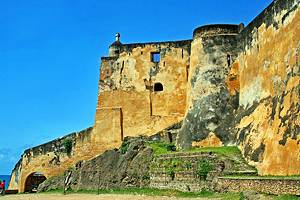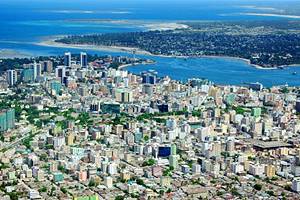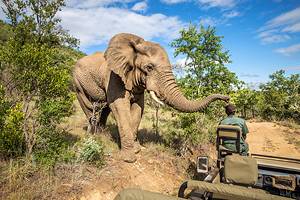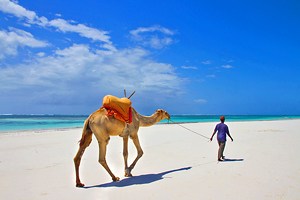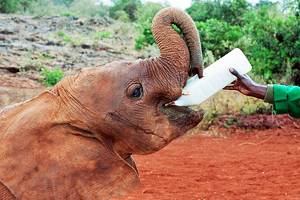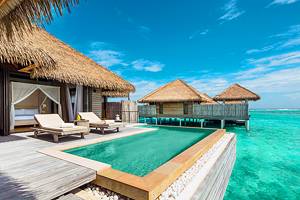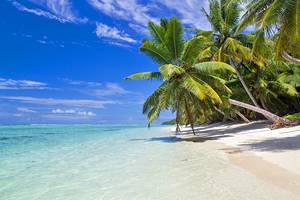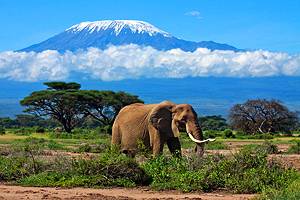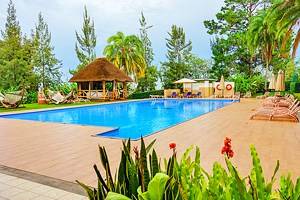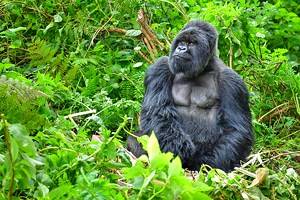Tourist Attractions in the Seychelles
Stunning and unspoiled, the elysian islands of the Seychelles star in countless tropical island fantasies and top many a bucket list.
Beautiful boulder-strewn beaches, virgin jungles, thriving coral reefs, and UNESCO-listed nature reserves are just some of the many attractions of the archipelago's 115 coral and granite islands, which are the peaks of a vast underwater plateau.
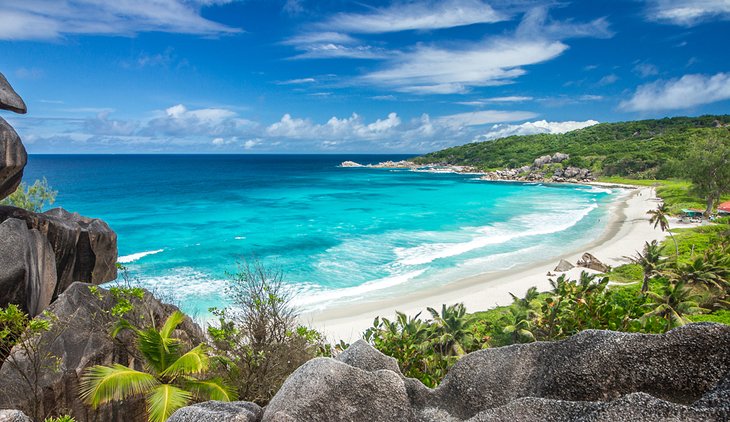
The Seychelles lie east of Kenya, near the equator. Almost half their total land area is protected, and many of the islands and atolls are contained within marine sanctuaries.
Popular things to do in the Seychelles include hiking the mountain trails, basking on the ravishing beaches, rock climbing, photographing the unique flora and fauna, and dining on mouthwatering Créole cuisine.
Aquatic pursuits abound in the clear, azure water. Diving, snorkeling, surfing, and sailing are all world class, and the Seychelles encompass some of the richest fishing grounds in the world.
The larger granitic inner islands of the Seychelles (primarily Mahé, Praslin, and La Digue) are the most developed for tourists, with many luxury five-star Seychelles resorts so glamorous, you'll feel like royalty.
Mahé is home to the small capital, Victoria, as well as the international airport, the cruise ship port, and the beautiful Morne Seychellois National Park. On Praslin Island, you can explore the UNESCO-listed Vallée de Mai, while sleepy La Digue shelters some of the Seychelles' most breathtaking beaches.
The outer islands are mainly uninhabited, low-lying sand cays and small coralline islands and atolls. Fishing is superb here, and anglers will find exclusive fishing lodges on Alphonse Island and Farquhar Atoll.
No matter what you choose to do in these sublime islands, learn more about the best places to visit with our list of the top attractions in the Seychelles.
Anse Lazio, Praslin
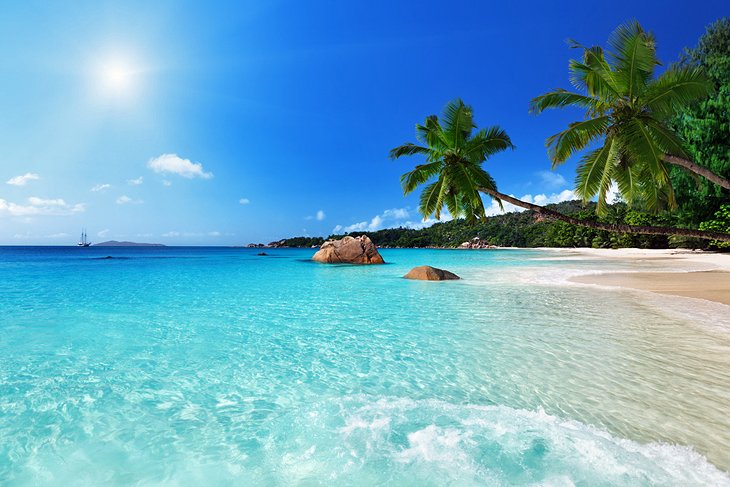
On the north shore of Praslin Island, Anse Lazio (Chevalier Bay) is one of the Seychelles' most beautiful beaches. You have to hike over a hill to access the beach, but trust us, it's worth the effort.
Flanked by rounded granite boulders, this long stretch of soft blond sand merges with crystal-clear waters in dreamy shades of blue. Takamaka trees and coconut palms fringe the beach, providing patches of shade for relaxing, and hungry bathers can refuel at restaurants on both ends of the beach.
The best time to visit Anse Lazio is during the early morning or late afternoon, when most of the tour buses have left.
Anse Intendance, Mahé
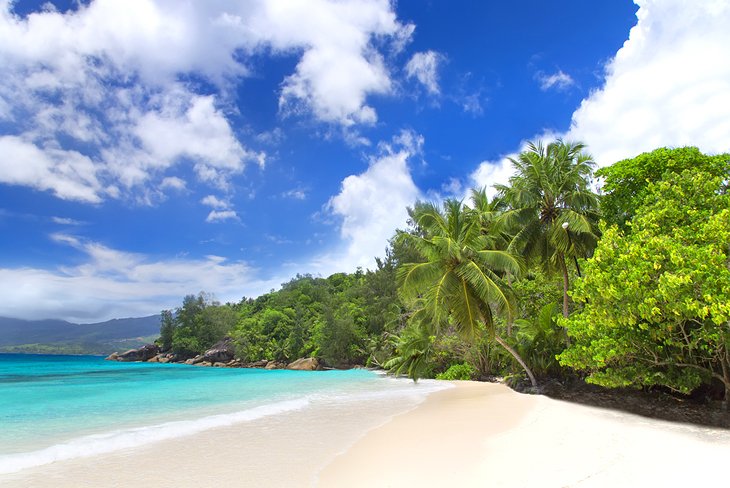
One of Mahé's best beaches, this small and secluded crescent of sand on the island's south coast is a favorite surfing spot thanks to its frequent big swells and wild waves. While you won't find a reef to snorkel around at this pretty beach, there are plenty of other activities to keep you happily occupied.
While beautiful and action-packed, this isn't the best beach for families. The lack of a protective reef makes swimming a little rough when trade winds blow from the southeast, especially from June through September.
That said, sunbathers, beachcombers, and photographers will enjoy this picturesque, palm-framed strand at any time of year. Insider's tip: Keep your eyes peeled and watch your step–turtles nest along the powdery shores here.
Baie Lazare, Mahé
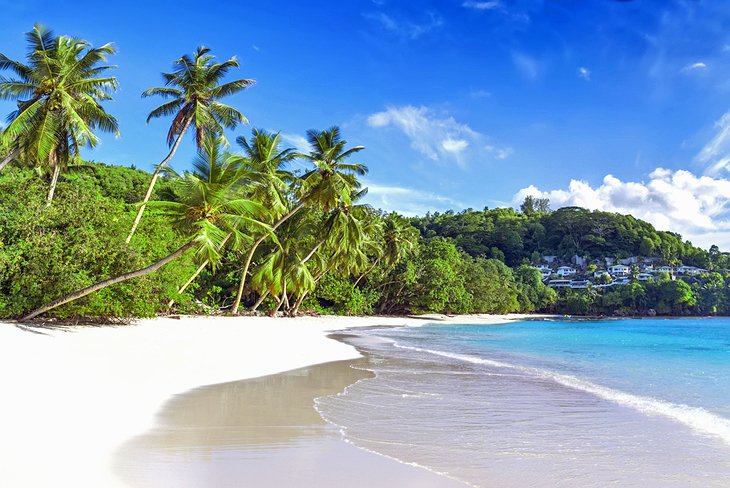
The pretty village of Baie Lazare on Mahé was named after 18th-century French explorer Lazare Picault, who landed here when the French government sent him to explore the islands.
One of the area's main tourist attractions is the neo-Gothic Baie Lazare Church, dedicated to St. Francis of Assisi, which provides a panoramic view of the area.
The stunning beaches of Anse Soleil and Petite Anse are among the best beaches in the Seychelles, with their striking azure water and dazzling white sand. In fact, Petite Anse tops the list of the Seychelles' best beaches due to its protective bay and silver-tinged sand.
This is an idyllic beach for families who want to swim and snorkel in a calm, safe space.
La Digue Island
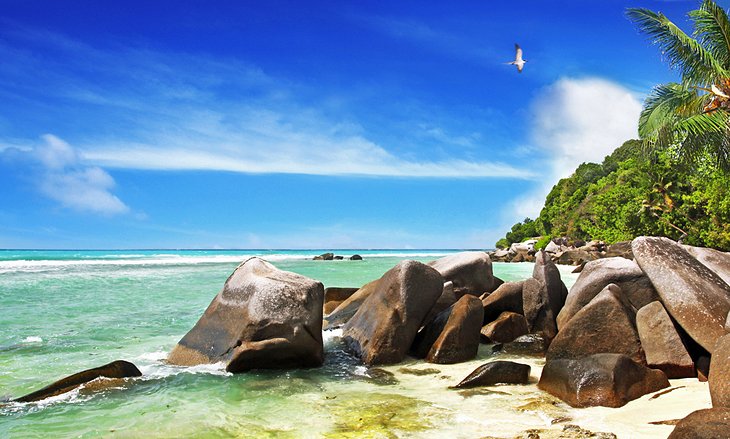
The fourth-largest island in the archipelago, La Digue is a haven for nature lovers. It's also a great place to visit for anyone seeking a glimpse of traditional island life–bicycles and oxcarts are popular modes of transport.
Stunning white-sand beaches and granite rock outcrops rim the coast, and beach connoisseurs will find one of the planet's most picturesque stretches of sand and sea here: Anse Source D'Argent. You do need to pay to access the beach at the nearby L'Union Estate, where your admission includes a tour through this old copra factory and vanilla plantation.
Another sightseeing attraction is the Veuve Nature Reserve, home to the endangered black paradise flycatcher, also called "the widow" because of its streaming black tail feathers.
Diving and rock climbing are also popular things to do on the island, and hikers will enjoy La Pass to Grand Anse Trail, which threads past French colonial houses through woodlands and marsh areas to gorgeous Grand Anse beach.
Curieuse Island Day Trip
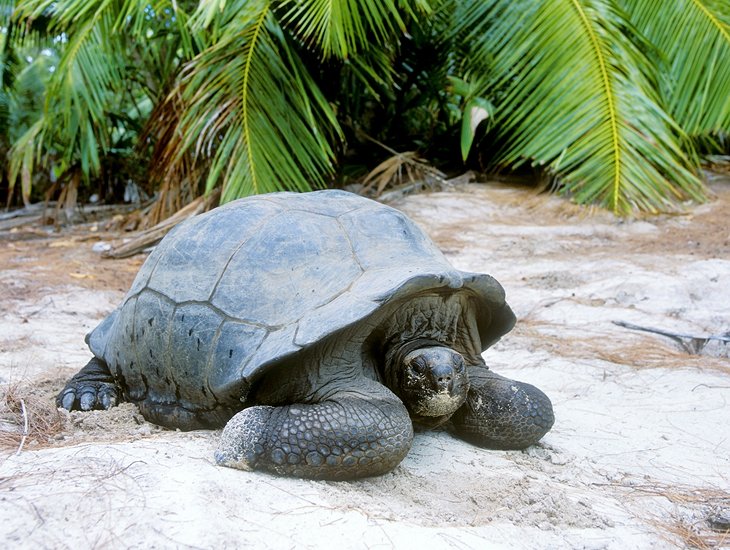
Once known as Île Rouge due to its russet-toned earth, Curieuse Island is now home to a breeding program for giant tortoises, which roam freely around the sandy coves.
Most of the island is covered with takamaka and casuarina trees, which shade the white-sand beaches, but the island is known for another botanical distinction: Curieuse is the only place besides Praslin where the coco de mer palm grows naturally.
The island was also once a leper colony, and you can explore the ruins of the leprosarium on the south shore, as well as the doctor's house, a preserved national monument.
Curieuse Island is accessible by boat tours from Praslin Island.
Morne Seychellois National Park

Nature lovers and hikers will be in heaven in Morne Seychellois National Park. This is the largest national park in the Seychelles, covering more than 20 percent of the area of Mahé.
Within its lush borders lies the mountain chain named after its highest point, Morne Seychellois, which reaches a height of 905 meters and overlooks the capital of Victoria.
Wildlife includes several notable species of birds, including the Seychelles scops-owl, bulbul, and sunbird, and the lush vegetation varies from several species of endemic palms to pandanus, pitcher plants, and ferns.
You'll find some of the best hikes on the island here. Hiking trails ascend into the park from the village of Danzil, passing tea plantations and offering spectacular views of the southwest coast of Mahé from the mountain slopes. The moderate Morne Blanc hike is one of the most popular trails and offers spectacular views from its summit.
Walking west through the park, hikers will reach the Baie Ternay and Port Launay Marine Parks. To the northwest lies the hamlet of Bel Ombre and the isolated beach at Anse Major.
Ste Anne Marine National Park
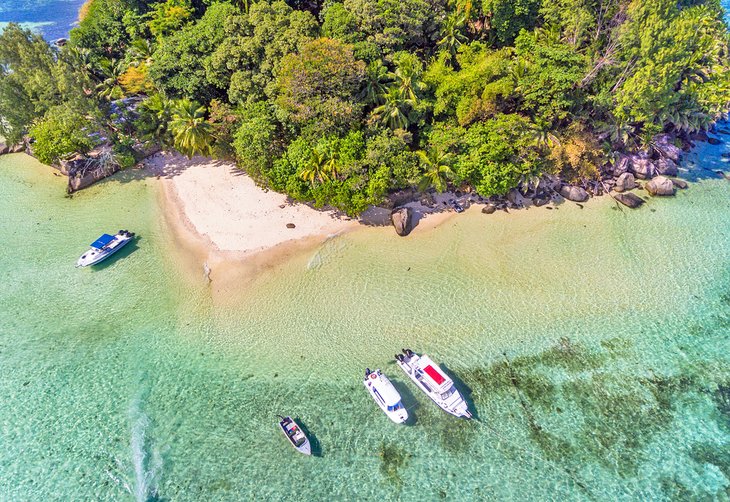
Encompassing six islands, a 15- to 20-minute boat ride off the coast of Mahé near Victoria, Ste Anne National Marine Park became the first national park in the Indian Ocean in 1973.
Snorkeling, scuba diving, and glass-bottom boat excursions reveal the rich diversity of marine life in the park's coral reefs, and you can explore most of the islands within the reserve on day excursions from Mahé. You can also stay overnight on a few of the islands.
Sainte Anne Island is an important nesting site for hawksbill turtles. In spite of its mangroves and crocodiles, the island was the site of a 1770 French settlement, the first in the Seychelles.
On Round Island, a former leper colony, you can enjoy a nature walk and stay overnight at the JA Enchanted Island Resort.
Île Cachée is an important breeding site for noddies and a designated nature reserve. At Cerf Island, you can swim, snorkel, or dive along the beautiful reefs, or bask on the uncrowded beaches. You can also base yourself here at the Cerf Island Resort or L'Habitation Cerf Island.
Privately owned Moyenne Island features nature trails, reconstructed settlers' homes, pirate graves, a small thatched chapel, and giant tortoises.
Beau Vallon Beach
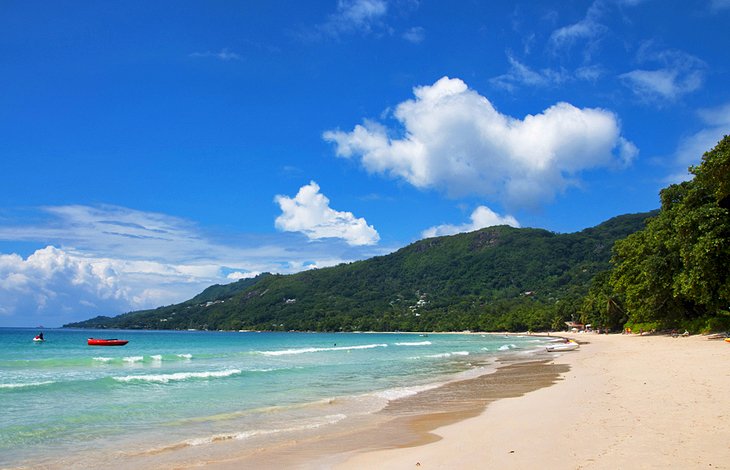
Beau Vallon's alluring curve of glittering sand, on Mahé's northwest coast, is a magnet for both tourists and locals. Looking out to sea, mountainous Silhouette Island shimmers on the horizon providing a picturesque view.
If you're looking for buzzing beach action, this is a good choice. Hotels and restaurants fringe the shore, and on weekends, locals come here for beach barbecues. You'll also find a variety of water sports on offer here, including Jet Skis, water skiing, banana boats, and paddleboarding.
Lifeguards patrol the beach, and the sea is usually calm, especially during the southeast trade winds, making this a good choice for families with small children.
Address: Beau Vallon Beach Road, Beau Vallon, Mahé
Anse Volbert
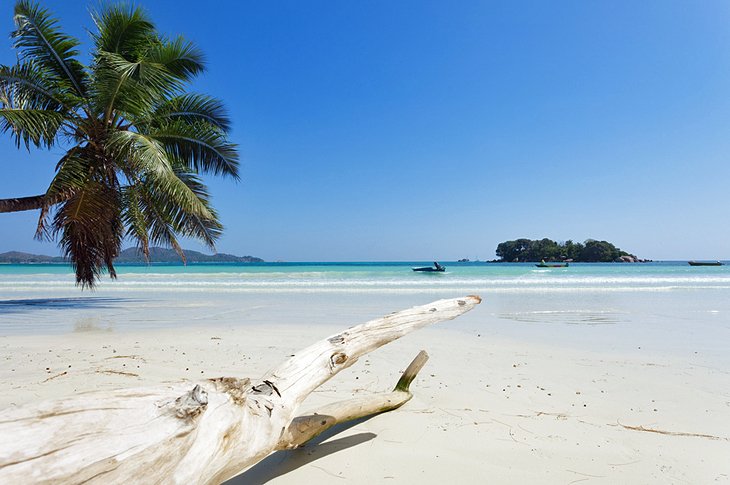
On the northeast coast of Praslin, Anse Volbert (also known as Côte d'Or) is one of the island's most popular beaches. Warm, shallow water laps the sun-bleached sands, and coral reefs beckon just offshore. The calm waters are also safe for swimming with small children.
This beach is also a popular starting point for many day cruises and other island excursions.
Anse Volbert is one of the island's main resort areas, and you'll find many hotels and restaurants lining the shores, including the Hotel Club Cote D'Or, with thatched bungalows tucked amid the tropical foliage.
Vallée de Mai National Park, Praslin
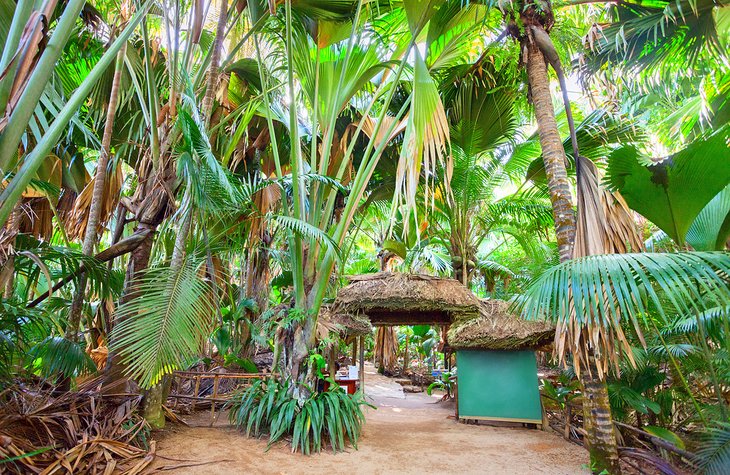
Need a break from all the sun, sand, and sea? Head to the cool, shady recesses of Vallée de Mai National Park. This is one of the best places to visit in the Seychelles for nature lovers.
A UNESCO World Heritage Site, on the island of Praslin, this lush palm-studded park preserves a prehistoric forest that contains at least 4,000 examples of the rare giant coco de mer fruit palm, which is endemic to the Seychelles.
Before you head off on the hiking trails, stop by the visitor center to learn more about the park's ecology and see some of the coco de mer's seeds, which are among the largest in the world. Other plants that flourish in the park include vanilla orchids, palmiste, latanier, splayed traveler's palm, and Chinese fans.
It's easy to explore this reserve along the well-marked nature trails. You can choose from three different routes that take between one and three hours to hike. Towering trees form an overhead canopy, keeping the trails shaded for most of the way, and huge boulders lie along the forest floor.
The valley is home to many species of lizards and rare birds, such as the Seychelles bulbul; fruit pigeon; and the national bird of the Seychelles, the black parrot.
Hiring a guide is highly recommended so you can learn more about the plants and animals. Note, too, that there is a fee to enter the park.
Cousin Island Day Trip
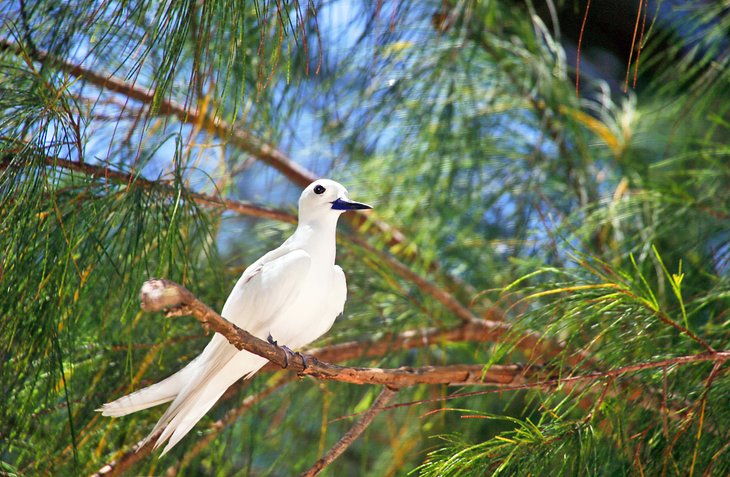
One tiny bird is responsible for the preservation of this beautiful island: the rare Seychelles warbler.
Cousin Island Special Reserve was established in 1968 to protect this rare species, as well as many other endemic bird species. It is also the most important nesting site in the entire western Indian Ocean for the critically endangered hawksbill turtle.
Cousin Island is also the world's first carbon neutral nature reserve.
The island lies about two kilometers from Praslin Island, and you can organize day trips through local tour operators. Once you arrive on the island, one of the reserve's wardens will take you on an approximately 75-minute tour, sharing details about the island's unique ecology.
Keep an eye out for some of the resident birds, including the Seychelles magpie robin, the Seychelles brush warbler, the Seychelles turtledove, and the wedge-tailed shearwater. The reserve also encompasses breeding grounds for lesser noddies, fairy terns, and tropicbirds.
Official site: http://www.natureseychelles.org/visiting/cousin-island
Aride Island Nature Reserve Day Trip
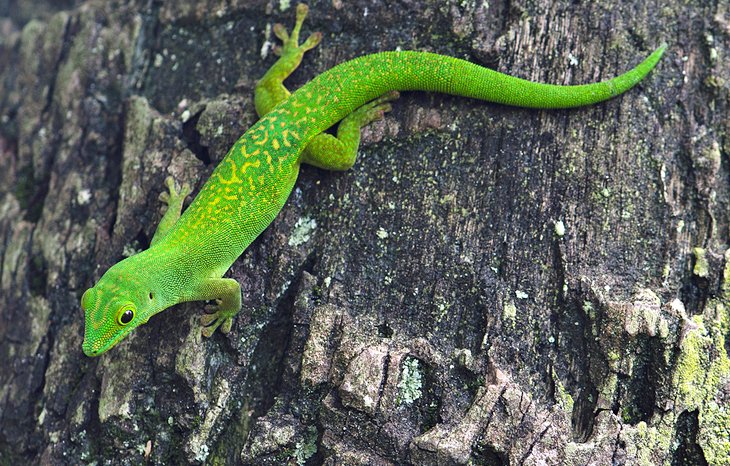
The northernmost of the Granitic Seychelles, Aride Island Nature Reserve is the breeding ground for 18 species of seabirds, including frigate birds, red-tailed tropicbirds, and the world's largest colonies of lesser noddy and roseate terns.
Nature lovers will find the highest density of lizards anywhere on earth, as well as several endemic species of flowers. Wright's gardenia, or bois citron, is unique to this island.
Most hotels on Praslin Island can organize day trips to Aride, but note that the island is often closed to visitors from May through September due to rough surf. Visits by helicopter can also be arranged.
Official site: http://www.arideisland.com/
Silhouette Island
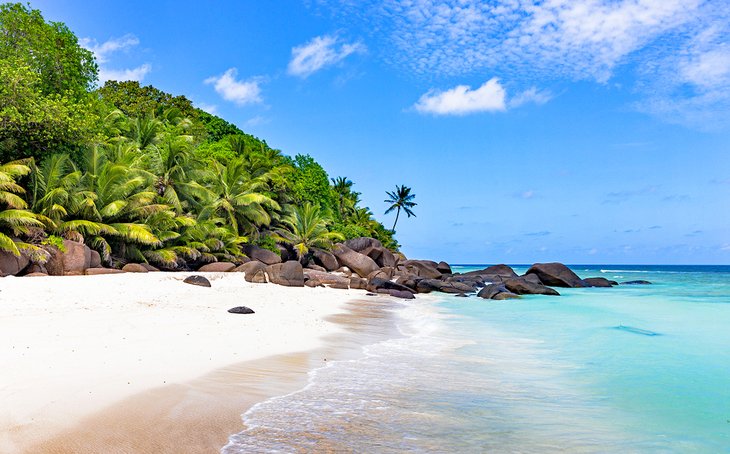
In a marine park 30 kilometers off Mahé's west coast, mountainous Silhouette Island is renowned for its rich biodiversity. It's the only other island in the Seychelles, besides Mahé, with a mist forest, which cloaks the 731-meter peak of Mont Dauban.
The third-largest of the granitic islands, Silhouette Island has rugged terrain that has helped preserve its natural beauty. The park protects more than 2,000 species, including birds, geckos, chameleons, turtles, and skinks.
You'll find plenty of things to do here. You can explore caves; bask on beaches with wonderful swimming and snorkeling opportunities; and see diverse flora and fauna such as carnivorous pitcher plants, coco de mer palms, millipedes, slugs, and snails.
To get to the island, you can catch a 45-minute ferry operated by the Hilton Seychelles Labriz Resort & Spa, the island's only hotel, from the Bel Ombre jetty on Mahe. Better still, book a room and stay here. This all-villa property is luxurious, the food divine, and the service top-notch!
Alternatively, you can arrive by private boat transfer or a scenic 15-minute helicopter flight.
Victoria, Mahé
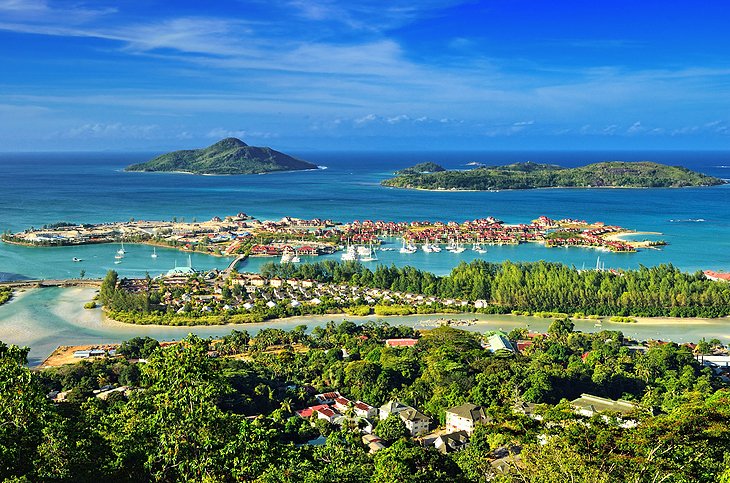
Named Port Victoria in honor of the British queen after her coronation, the small capital of the Seychelles, on the island of Mahé, is the only seaport in the country.
It's easy to see the main sites here in a day. One of the main tourist attractions is the Seychelles National Botanical Gardens. Established almost a century ago, the gardens encompass 15 acres of native and exotic plants as well as flying foxes, giant tortoises, and an orchid garden.
In the city, modern buildings of concrete and glass have sprouted up in recent years, and the few remaining colonial buildings lie around Freedom Square. The most prominent historical structure is the clock tower. Erected in 1903, it was modeled on Little Ben, a small version of Big Ben in London.
Overlooking the square, St. Paul's Cathedral is built on the site of the first church of the Seychelles, which was destroyed by a freak cyclone in 1862.
Shoppers head to Sir Selwyn Clarke Market, where locals sell fish, fresh fruits, and vegetables, and the many craft shops offer souvenirs, ranging from ship models to pearl jewelry.
For an overview of the flora and fauna of the Seychelles, visit the Natural History Museum, which also displays a few historical artifacts.
Bird Island
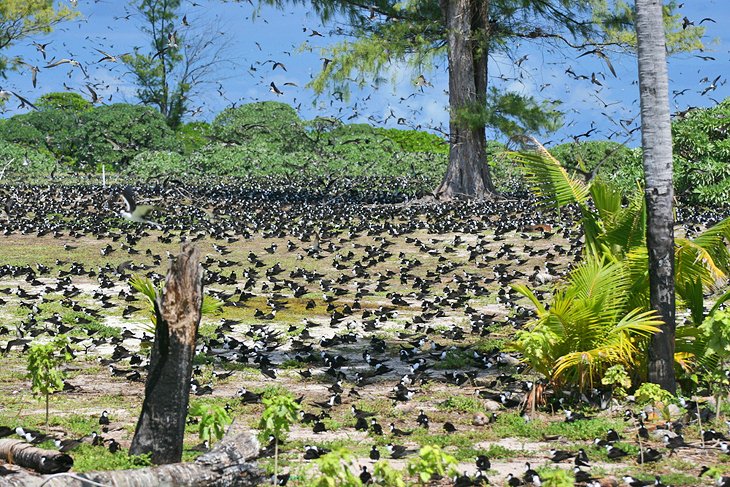
Once known as Îles aux Vaches for the dugongs (sea cows) in the area, Bird Island harbors a population of migratory sooty terns, which swells to 1,500,000 birds during the May to October breeding season. Birders and photographers can climb raised observation platforms for clear views of the nests.
Other species on the island include fairy and noddy terns, cardinals, ground doves, mynas, crested terns, and plovers. Giant land tortoises are also in residence, and the nearby Seychelles Bank is renowned for its big-game fishing.
The only accommodation on the island is Bird Island, Seychelles, a no frills, self-catering, eco-lodge. You can access the island via a 30-minute flight from Mahé.
Aldabra Atoll
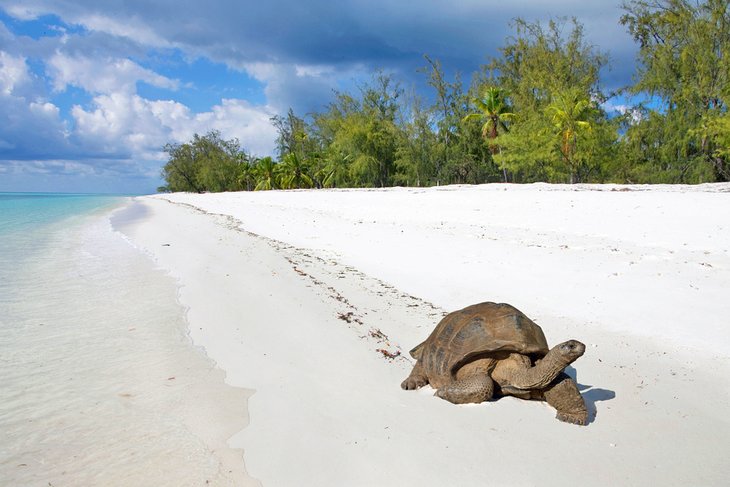
A UNESCO World Heritage Site, Aldabra is the world's largest raised coral atoll. The central lagoon fills and empties twice a day through four channels, revealing mushroom-shaped pinnacles known as champignons.
Tiger sharks and manta rays often prowl the shallows, and the atoll is home to thousands of birds, including the white-throated rail (the only flightless bird in the Indian Ocean). Also on view are lesser and great frigate birds, red-footed boobies, dimorphic egrets (found only here and in Madagascar), Aldabra sacred ibis, greater flamingos, and the Malagasy kestrel.
In addition to its rich avian life, Aldabra is the habitat of 200,000 giant tortoises–five times as many as the Galapagos.
Visiting this remote island is challenging–you can only access the atoll by chartering a private boat, and you need to contact Seychelles Islands Foundation first to obtain permission.
Grand Anse

It's easy to see why Grand Anse has been dubbed one of the best beaches on La Digue island and one of the top beaches in the Seychelles. It's gorgeous! And, this sandy spot is not as crowded as some of the other, more popular beaches on the island.
Fittingly named, Grand Anse is the longest beach on La Digue and its vast expanse of powder-soft white sand is enchanting. The beach is backed by tall palms, which offer shade that doesn't quite reach the sand. If you're looking for refreshment, head to the beach shack; it provides shade and cool juices.
While not the best beach for families with young children, the rough, crashing surf at Grand Anse is ideal for surfers. Granite boulders are peppered along the sand, creating a gorgeous backdrop for Insta-worthy selfies.
Copolia Trail
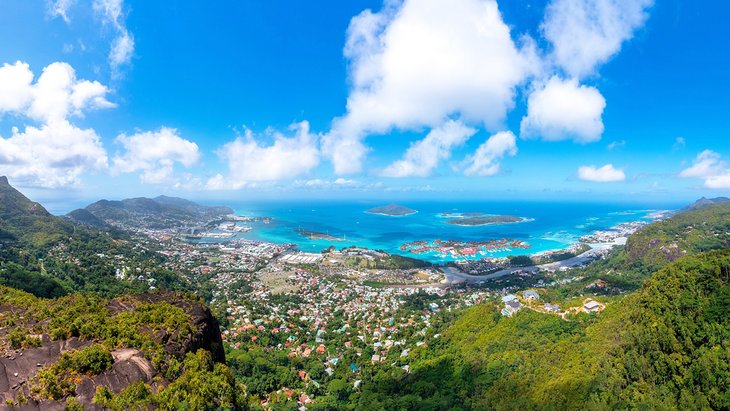
The Copolia Trail is a 1.4 km-long nature path located just outside Victoria, on the island of Mahé. Rated of moderate difficulty, this trail involves a gradual climb–but don't worry, it's not too taxing.
The best view can be had from the summit, at 488 meters above sea level. Panoramic vistas of Victoria and the sparkling azure ocean are your reward for a path well-hiked. Speaking of hiking, expect this to take about an hour there and back, and longer if you choose to lounge at the top.
Wooden boardwalks help walkers traverse the lush jungle while moss-covered rocks add an air of enchantment. Be sure to wear good, comfortable shoes and keep your phone charged. You'll want it to take a zillion photos.
Insider's tip: The carnivorous pitcher plants at the summit are a bonus.
Best Time to Visit Seychelles
| Average minimum and maximum temperatures for Seychelles in °C | |||||||||||
| J | F | M | A | M | J | J | A | S | O | N | D |
| 30 24 | 30 25 | 31 25 | 31 25 | 31 25 | 29 25 | 28 24 | 28 24 | 29 24 | 30 24 | 30 24 | 30 24 |
| PlanetWare.com | |||||||||||
| Average monthly precipitation totals for Seychelles in mm. | |||||||||||
| 379 | 262 | 168 | 178 | 125 | 64 | 81 | 97 | 122 | 206 | 216 | 281 |
| Average minimum and maximum temperatures for Seychelles in °F | |||||||||||
| J | F | M | A | M | J | J | A | S | O | N | D |
| 85 75 | 86 76 | 87 76 | 88 77 | 86 77 | 84 76 | 82 75 | 83 75 | 84 75 | 85 75 | 86 75 | 86 75 |
| PlanetWare.com | |||||||||||
| Average monthly precipitation totals for Seychelles in inches. | |||||||||||
| 15 | 10 | 6.6 | 7.0 | 4.9 | 2.5 | 3.2 | 3.8 | 4.8 | 8.1 | 8.5 | 11 |
It's almost impossible to find a bad time to visit the Seychelles. With a phenomenal climate year-round (we're talking sunny, warm, tropical weather pretty much every day) and spectacular scenery, you'll be happy no matter when you go. That said, the best time to visit the Seychelles is during the months of April, May, October, and November.
The region's crystal-clear turquoise waters; white, sugar-soft sand; and verdant rainforests are the stuff of paradise at all times of the year. Plus, you've got secluded private islands, a thriving turtle population, and the most amazing marine life to witness up close.
Depending on what you're hoping to do with your time in this brilliant archipelago (i.e. lounging, scuba diving, beach hopping, fishing, or hiking) certain months may be more optimal than others. That's why we suggest visiting in April, May, October, and November. These months are ideal for water activities, cheaper rates, and fewer crowds.
Whether you're hoping for a more culturally vibrant vacation on the main island of Mahé or hope to enjoy a low-key, laid-back existence on the luxurious Félicité, you're guaranteed the most optimal weather experience during the spring and fall.
More Related Articles on PlanetWare.com

Plan Your Visit to the Seychelles: You'll find some of the most luxurious all-inclusive resorts in the world here.
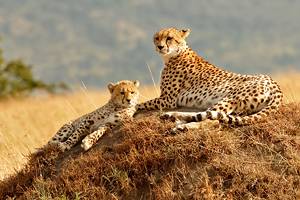
More Places to Visit Nearby: Since the Seychelles lies off East Africa, it's easy to combine a visit here with a safari in Kenya or Tanzania. For information on the top areas for wildlife viewing, see our page on the best game reserves in Africa.



